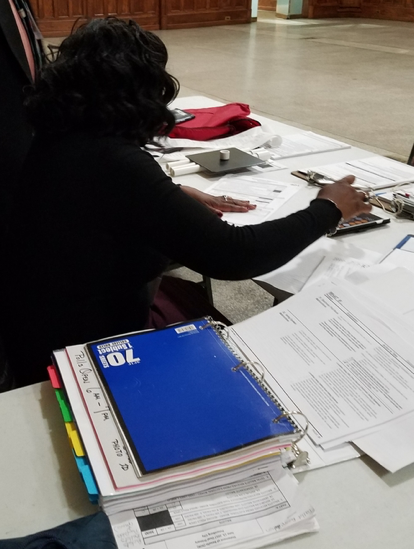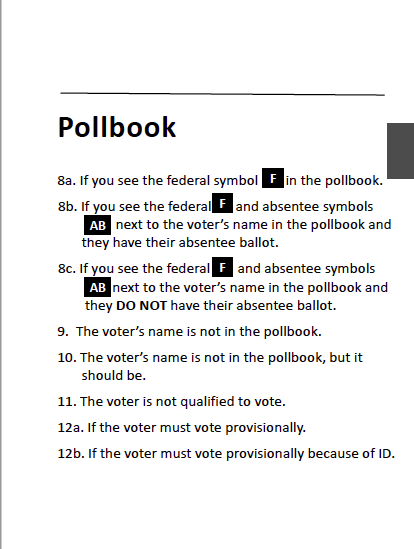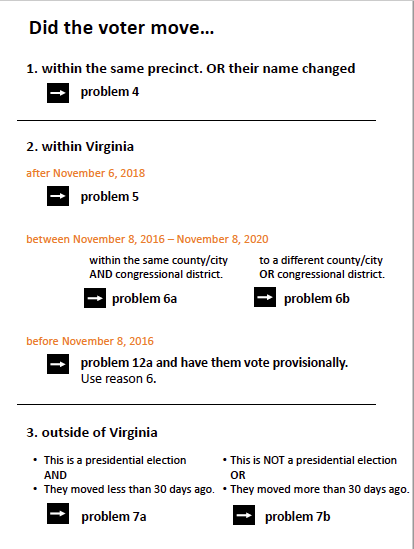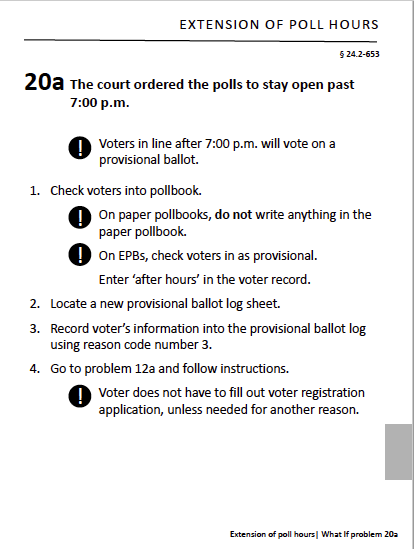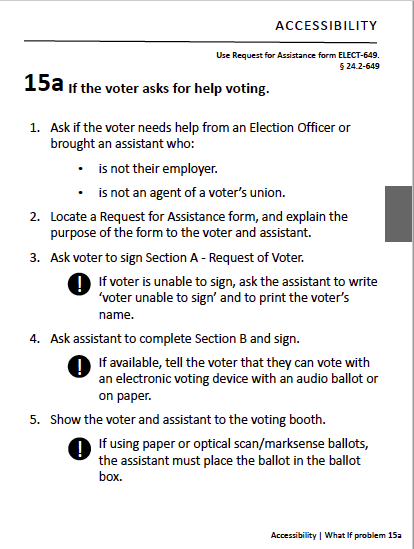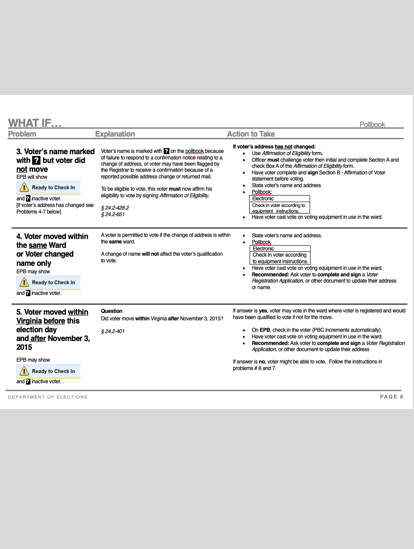Helping poll workers solve problems quickly with a What-If guide
What happens when poll workers are faced with voters with unusual problems? There’s no way to prepare for every possible circumstance, especially in a state that requires voter ID. Even at the best-run polling place, problems can get complicated quickly when help from the elections office can’t be available fast enough to keep the lines moving and get voters checked-in accurately.
Virginia Department of Elections’ solution is a “What if” quick guide: What do to when…a complete guide for helping voters with exceptional situations, which breaks down scenarios into exactly what action is needed in what order. The old version was compact but not easy to learn from. Veteran poll workers, who had worked with the old version over several elections, grew to know it well and used it when they only needed a reminder.
The goal of the update was to help all poll workers find the information quickly and help people exercise their right to vote. Virginia also wants to ensure that everyone’s right to vote is equal. It’s important that poll workers carry out the procedures the same way across Virginia.
As one of the judges for the Center for Plain Language’s ClearMark awards said:
“The need for voters to be treated fairly, equally, and promptly during an election seemed of utmost importance to the revision team, who kept the poll workers top of mind during the guide’s revamp. As an election supervisor myself, I’ve seen firsthand over the years the need for election day guides that are easy to use. This one is very good!”
How we developed the new What Ifs
Along with Virginia General Registrars, we started by looking at both the document and how it was working. For example, we reviewed the existing version against plain language best practices. We also conducted interviews with election officials to understand the constraints and issues, what they felt worked well and what didn’t.
The CCD team observed several elections and talked with poll workers to understand where they faced troubles using the What Ifs. Poll workers said it was difficult to know what to do and especially how to do it quickly. A booklet format would be more useful in the context of a busy election day.
We reviewed drafts with state and local election staff, getting input as we designed the new version and rewrote the content. Then came usability tests with poll workers. Next, with a near-final draft in hand, several county election offices ran pilot tests on election day. They introduced poll workers to the What ifs during training. They collected feedback, heard questions, and observed poll workers engage with the new tool.
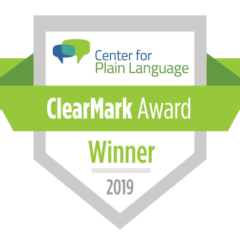 The new What ifs won a ClearMark Award from the Center for Plain Language in the Before and After Print category. The judges said “This [is an] excellent guide to handling difficult problems on election day. Its structure enables ease of use, its language ease of understanding, and its overall revision ease of helping voters … Congratulations on your contribution to plain language and democracy!”
The new What ifs won a ClearMark Award from the Center for Plain Language in the Before and After Print category. The judges said “This [is an] excellent guide to handling difficult problems on election day. Its structure enables ease of use, its language ease of understanding, and its overall revision ease of helping voters … Congratulations on your contribution to plain language and democracy!”
More reading
Field Guide 04: Effective poll worker materials
Updated for 2020: Virginia What ifs – What do to when…a complete guide for helping voters with exceptional situations
(Or look on the Virginia Forms Warehouse for “what ifs”)


